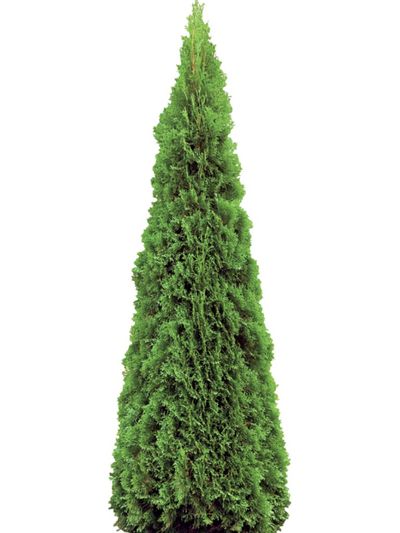The key to successfully using arborvitae in the landscape is selecting the proper varieties. This article is about the popular variety of arborvitae commonly known as ‘Emerald Green’ or ‘Smaragd’ (Thuja occidentalis ‘Smaragd’). Continue reading for Emerald Green arborvitae info.
About Emerald Green Arborvitae Varieties
Also known as Smaragd arborvitae or Emerald arborvitae, Emerald Green arborvitae is one of the most popular varieties of arborvitae for the landscape. It is often selected for its narrow, pyramidal shape and deep green color. As the flat, scale-like sprays of foliage mature on this arborvitae, they turn a deeper shade of green. Emerald Green eventually grows 12 to 15 feet (4-5 m.) tall and 3 to 4 feet (1 m.) wide, reaching its mature height in 10 to 15 years. As a variety of Thuja occidentalis, Emerald Green arborvitae are members of the eastern white cedar family. They are native to North America and range naturally from Canada down to the Appalachian Mountains. When French settlers came to North America, they gave them the name Arborvitae, which means “Tree of Life.” Although in different regions Emerald Green arborvitae may be called Smaragd or Emerald arborvitae, the three names refer to the same variety.
How to Grow Emerald Green Arborvitae
When growing Emerald Green arborvitae, they grow best in full sun but will tolerate part shade and especially prefer to be partially shaded from the afternoon sun in the warmer parts of their zone 3 through 8 hardiness range. Emerald Green arborvitae are tolerant of clay, chalky, or sandy soil, but prefer a rich loam in a neutral pH range. They are also tolerant of air pollution and black walnut juglone toxicity in soil. Oftentimes used as privacy hedges or to add height around corners in foundation plantings, Emerald Green arborvitae can be trimmed into spiral or other topiary shapes for unique specimen plants. In the landscape, they may be susceptible to blights, canker, or scale. They can fall victim to winter burn as well in areas of high winds or damaged by heavy snow or ice. Unfortunately, deer also find them to be particularly appealing in winter when other greens are scarce.
